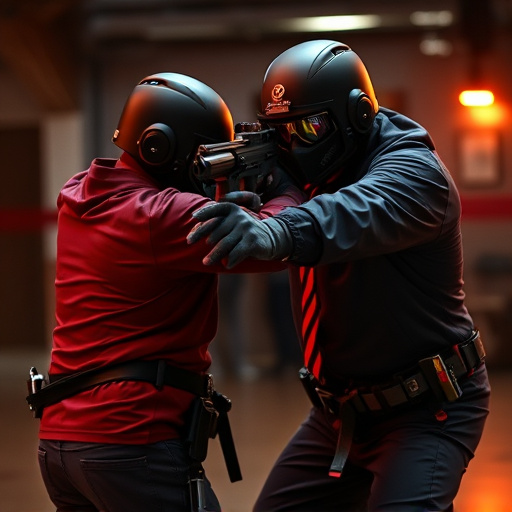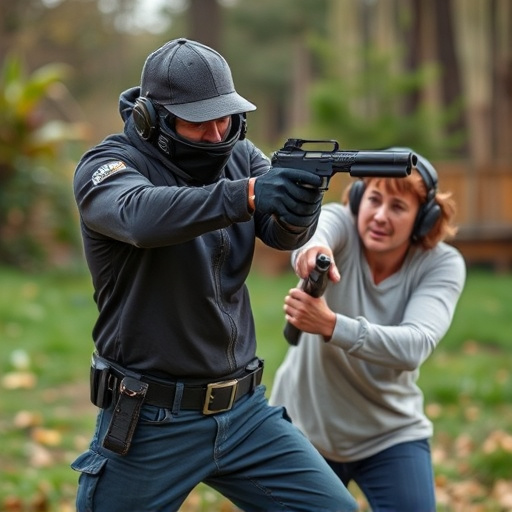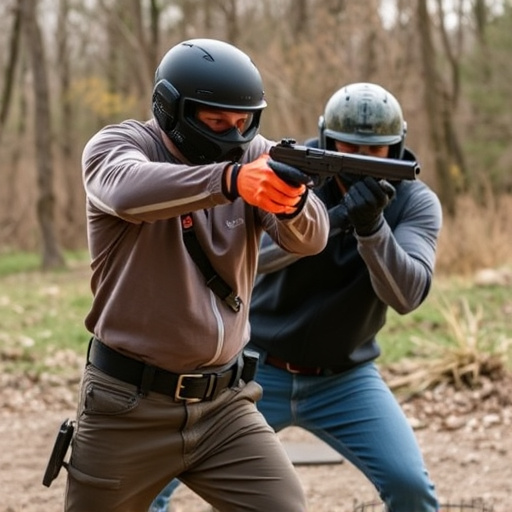Unraveling Stun Devices: Electrical Current Flow and Safety Features
Understanding basic electricity is key to grasping how stun guns work and their safety features. Stu…….
Understanding basic electricity is key to grasping how stun guns work and their safety features. Stun devices use high-voltage, low-amperage electric impulses to disable assailants, with the best safety features focusing on user protection and accurate deployment. These include advanced trigger mechanisms, built-in safety switches, durable construction, automatic shut-off functions, and adjustable current settings. Modern technology enhances stun gun performance, reliability, and user control, while testing and regulations ensure their safety and efficacy, emphasizing the importance of the best safety features in these self-defense tools.
“Unravel the electrifying world of stun devices, where understanding current flow is key to safety and effectiveness. This comprehensive guide explores the science behind these powerful tools, from basic electricity principles to advanced technology. We delve into the components that ensure optimal performance and safe operation, highlighting the best safety features in stun guns. By examining high-voltage safety measures and regulatory testing, this article offers insights critical for users and enthusiasts alike.”
- Understanding Basic Electricity: How Current Flows
- The Science Behind Stun Devices: Electrical Impulses
- Key Components of a Stun Gun: Safety and Efficiency
- High-Voltage Safety Features: Protecting Users and Targets
- Advanced Technology: Enhancing Current Flow for Maximum Impact
- Testing and Regulation: Ensuring Safe and Effective Stun Device Performance
Understanding Basic Electricity: How Current Flows

Understanding basic electricity is key to comprehending how current flows, and this principle is no different when it comes to stun devices. Electricity, at its core, is the movement of electrons—the tiny particles that carry electric charge. When a power source, like a battery in a stun gun, is connected to a circuit, it creates a path for these electrons to move from the negative terminal (anode) to the positive terminal (cathode). This flow of electrons generates electrical current, which can be harnessed and channeled to deliver energy.
In the context of stun devices, understanding this current flow is crucial when considering the best safety features. Stun guns, for instance, use high-voltage, low-amperage electric current to temporarily disable an aggressor by disrupting their nervous system. The key is to strike a balance—delivering enough current to stun effectively while ensuring the device is safe to handle and minimizing risks associated with accidental discharge or excessive power that could cause harm to the user.
The Science Behind Stun Devices: Electrical Impulses

Stun devices, particularly stun guns, rely on a rapid and powerful electrical current to disable an assailant temporarily. The science behind their effectiveness revolves around delivering precise electric impulses that disrupt the normal functioning of muscles and nerves. When activated, these devices emit a high-voltage, low-amperage charge, causing the target’s muscles to contract uncontrollably, resulting in a loss of balance and coordination.
The best safety features in stun guns are designed to ensure accurate and safe deployment during emergency situations. These include advanced trigger mechanisms, built-in safety switches, and controlled electrical output levels. By implementing such features, users can effectively disable an attacker while minimizing the risk of accidental shocks or harm to bystanders, making them valuable tools for personal safety and self-defense.
Key Components of a Stun Gun: Safety and Efficiency

The best safety features in stun guns are designed to ensure both user protection and effective deployment. Key components that contribute to this include high-quality, durable construction, which prevents accidental activation and protects the device from damage during use. Additionally, advanced electrical circuitry and safety switches are implemented to control current flow, minimizing risk to the user while maximizing impact on the target.
These safety measures encompass various mechanisms like trigger locks, automatic shut-off features, and adjustable current settings. By incorporating such innovations, stun guns offer a balance between power and control, enabling users to employ them with confidence and efficiency. This ensures that individuals can defend themselves in potentially dangerous situations while minimizing the risk of unintended harm.
High-Voltage Safety Features: Protecting Users and Targets

The best safety features in stun guns are paramount, considering their inherent high-voltage capabilities. These devices are designed to disrupt an assailant’s mobility and defend against potential threats, but user and target safety must never be compromised. Modern stun devices employ several innovative mechanisms to ensure this.
One of the primary safety measures is automatic shut-off functions that activate after a set stun cycle. This prevents accidental prolonged shocks and reduces the risk of electrical hazards for both the user and the intended target. Additionally, many stun guns incorporate smart sensors that detect body contact and activation intent, ensuring the device responds only when needed. These advanced safety features, combined with proper training and responsible usage, make stun devices effective personal defense tools while prioritizing user and public safety.
Advanced Technology: Enhancing Current Flow for Maximum Impact

Advanced technology plays a pivotal role in enhancing the current flow within stun devices, thereby maximizing their impact while prioritizing user safety. Modern stun guns employ sophisticated engineering to ensure precise and controlled electrical discharge. These innovations include advanced circuit designs that optimize energy distribution, allowing for a more efficient current flow directly to the target area.
The best safety features in stun guns often incorporate smart sensors and safety mechanisms that deactivate the device unless a clear path is detected, minimizing unintended shocks. Additionally, adjustable settings let users control the intensity of the current, ensuring that they can deliver a powerful response while mitigating potential risks associated with high-voltage discharge. These technological advancements not only enhance effectiveness but also contribute to safer handling, making stun devices more reliable tools for personal protection.
Testing and Regulation: Ensuring Safe and Effective Stun Device Performance

Testing and Regulation play a pivotal role in ensuring that stun devices, or stun guns, offer both safety and effectiveness. Reputable manufacturers adhere to stringent industry standards and conduct rigorous testing to verify the consistent delivery of electrical current, crucial for neutralizing threats swiftly and safely. These tests include simulating various conditions to gauge the device’s performance over time, ensuring reliability in diverse scenarios.
Regulation also dictates the specifications of best safety features in stun guns, such as precise current output controls, safety switches, and impact-resistant designs. By adhering to these guidelines, manufacturers guarantee that users receive a safe, effective tool for self-defense without compromising on quality or performance.
Stun devices, by harnessing and directing electrical current flow, offer a powerful self-defense mechanism. Understanding the science behind these devices, from basic electricity to advanced technology, is key to ensuring their safe and effective use. The best safety features in stun guns, such as high-voltage protection and precise current control, safeguard both users and targets. Proper testing and regulation further guarantee optimal performance, making stun devices a reliable option for personal safety.


